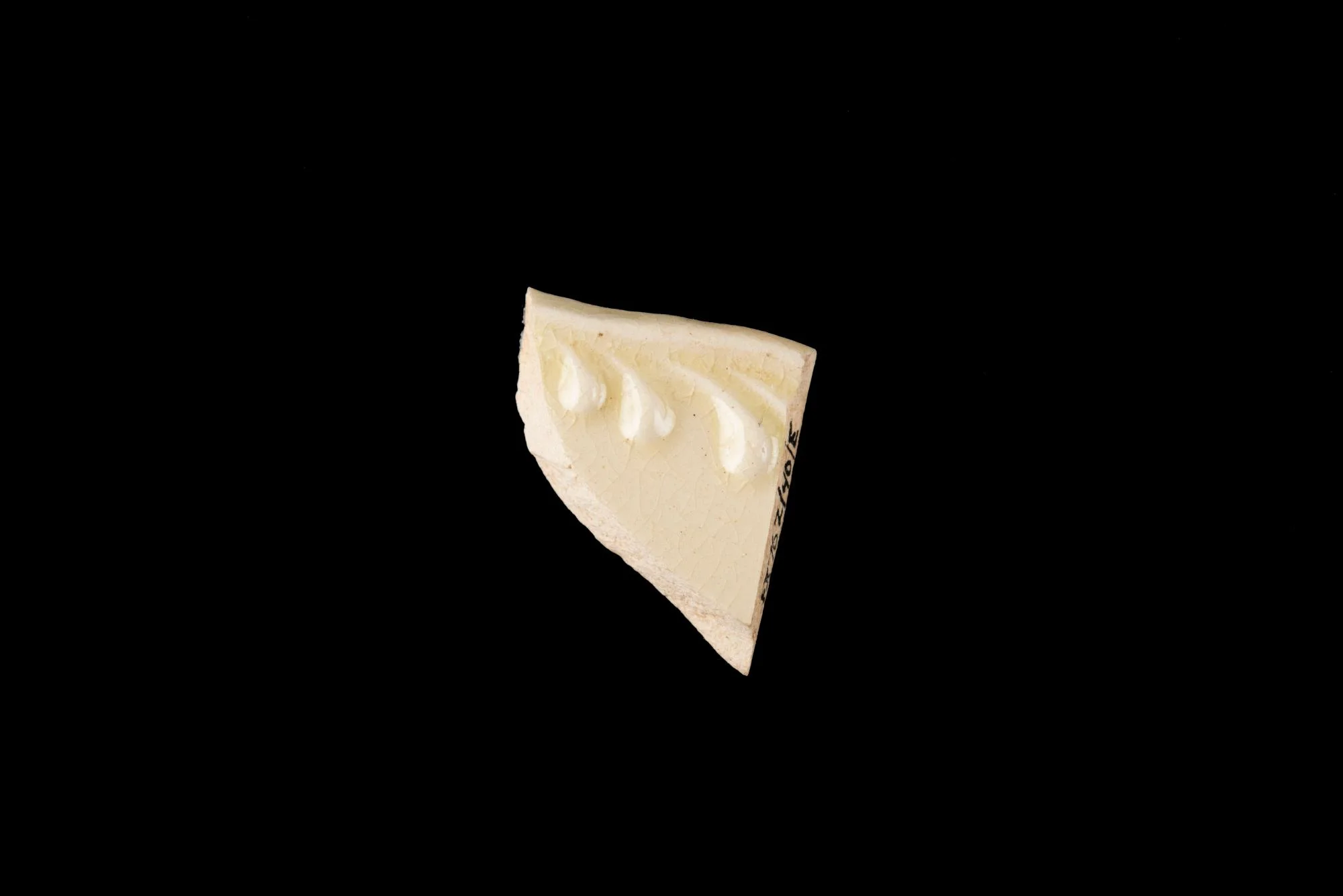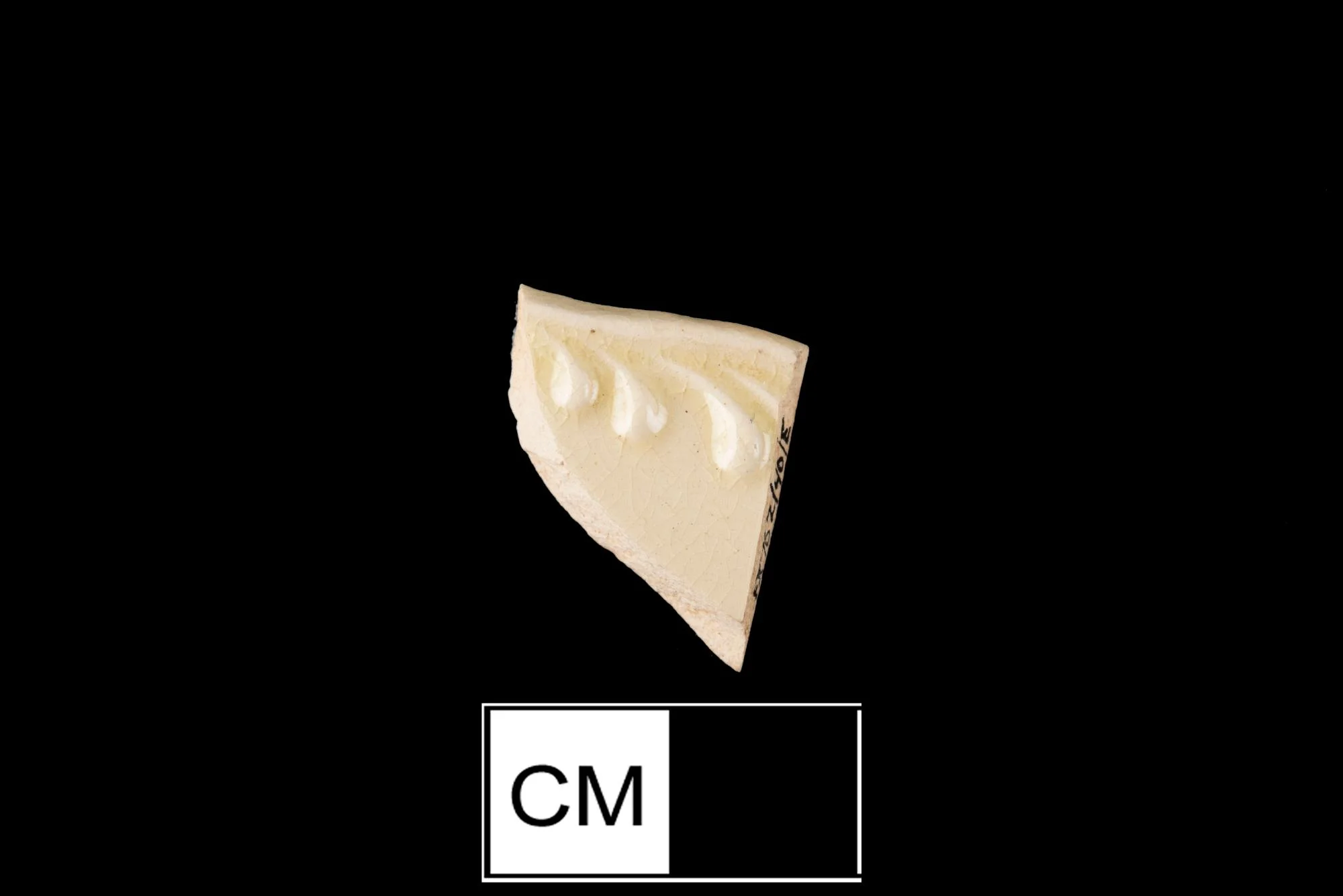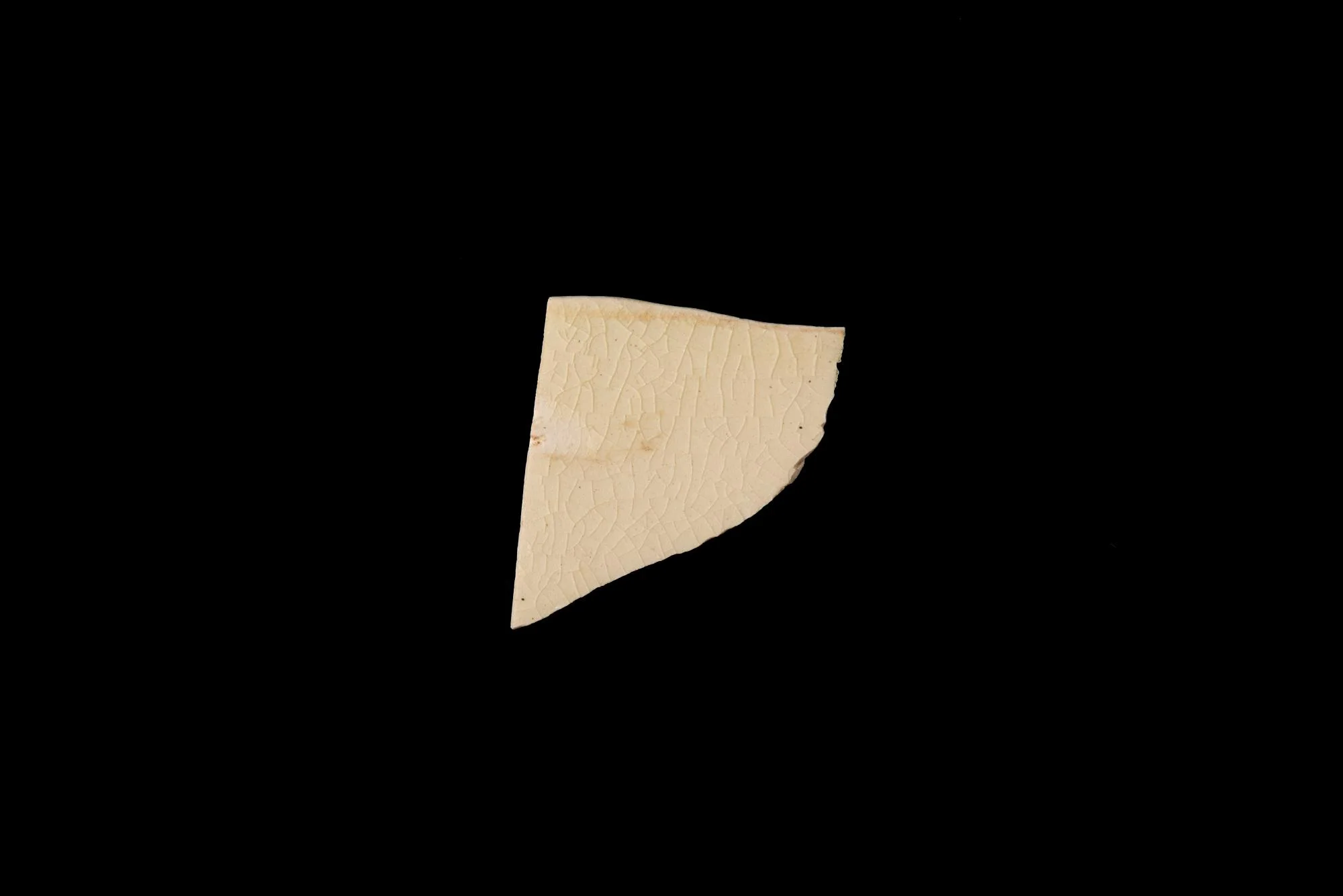Notes
This fragment of cream colored ceramic is a portion of a plate or platter decorated with a feather edged pattern along the rim. Archaeologists refer to this kind of ceramic as creamware and associate it with that produced by English potter Josiah Wedgewood beginning in 1762. Wedgewood successfully marketed this ware to a wide range of consumers. In 1767, he successfully sold a tea service to Queen Charlotte, wife of George III, and thereafter advertised the ceramic as Queen’s ware to appeal to the upper and middle class households throughout the English colonial world. George Washington himself used this term when ordering a 250-piece table setting for Mount Vernon in 1769. Wedgewood also ensured the success of creamware by pricing the ceramic reasonably, and at a substantially cheaper cost than imported Chinese porcelains. For these reasons, creamware was readily stocked in shops throughout colonial America where it was within reach of a wide array of free and enslaved consumers who had access to these stores over the second half of the eighteenth century.
While creamware itself was produced beginning in 1762, it wasn’t until 1765 that this feather edge decoration began to be applied to tablewares such as this plate or platter. This pattern of decoration was created by pressing the clay into cut block forms to mold the feathered barbs.
Object Type
Has it Been Conserved?
No
Where Was It Found?
Project Site: House for Families [more details]
Material
Vessel
Manufacturing Technology
Form
Completeness
Decorative Technology
Decorative Patern
Date
1769-1820
Country of Origin
Dimensions
20mm x 0mm x 25mm (W x H x L)
Illustration shows object in comparison to the size of a quarter
Weight
1.3 gram(s)
Object Number
1723118. CW. V.5
DAACS Number
1723118
Project: House for Families
The structure identified as the “House for Families” on the 1787 Vaughan plan likely housed the majority of the enslaved population living at the Mansion House Farm for much of the second half of the eighteenth century. The building was in existence from circa 1760 until it was demolished in late 1792 or early 1793. The archaeological evidence for the structure consisted of a brick-lined storage cellar (44FX762/40-47) measuring roughly six feet by six feet. Historically the cellar served as a handy trash receptacle once it ceased to be used for its original storage function, and through extensive excavation has yielded an extremely rich assemblage of household refuse. The analysis of these remains offers the opportunity to study important aspects of the daily lives of Mount Vernon's enslaved community.
See All Objects From this Dig


 Ceramic
Ceramic Feather Edge
Feather Edge